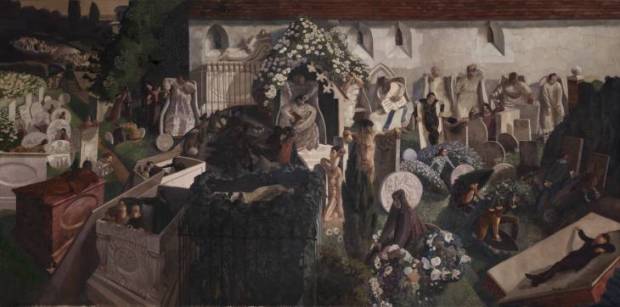Rachel Bowden
ENG328 Fall 2013
LET’S THROW SOME PAINT! POLLOCK AND ABSTRACT EXPRESSIONISM
Jackson Pollock’s Number 8 embodies artistic techniques that encapsulate a “make it new” revolution in art.
This piece is interesting because there isn’t necessarily one image or shape in particular that catches our attention. There seems to be an avoidance of any discernible parts within a whole. Instead, there is a series of splatters, globs, curvy lines, and colors that look as though they’ve been flung onto the canvas. Pollock only uses a few colors, and the red obviously is the one that is most unlike the others in terms of pop. The lines look lively, and have an aggressive quality to them, as though Pollock was moving about the canvas with varying rhythm when he painted this.
Although there is not an image that is clear in this painting, there is a clear sense of motion involved, and some lines are definitely more predominant than the others in terms of thickness (the thicker lines draw our attention more). The thickest lines are black, and there are really only two that are significantly larger than the others. The strokes and way that some of the globs of paint are thicker in some parts show where the lines were started and where they ended, and we get the perception that the painter literally attacked the canvas from all four sides, constantly changing his direction and color choice, perhaps. Some lines seem to be straight, while others have a distinct curve to them.
During the late 1940’s, Pollock redefined not only the techniques that artists used, but also the experience that viewers took on. Pollock’s works were mostly numbered, perhaps because he didn’t want the viewer to have a premature misconception of what the art should be taken as through analyzing a title. He wanted the viewers to create their own meaning—and clearly, he gave them a head start by not having a clear image displayed in his works similar to Number 8. He abandoned the traditional idea of composition in terms of relations among smaller parts—of course, perhaps his way of “making it new!”. He understood that the journey toward making an art piece was just as important as the piece itself, and his approaches and methods truly reformed the pre existing norms.
Instead of relying on a typical “form”, he decided to make it new through his revolutionary techniques. One of the first known artists not to use an easel, Pollock instead simply put the canvas on the floor, and was able to constantly move in order to create the motions, flows, and drips that he wanted. Put simply, Pollock broke boundaries that existed before he came along—completely making it new and creating new abstract forms for artists who followed. Pollock used new techniques and abstract images that ultimately revolutionized the art of his times, creating abstract expressionism. This idea of “breaking tradition” is clearly expressed in this piece, and is key to the modernist movement which Pollock called home.
Pollock, Jackson. Number 8. 1949. Neuberger Museum, State University of New York. Web 22 September 2013. <http://a-painting-per-day.blogspot.com/2010/01/number-8-by-jackson-pollock.html>
“Jackson Pollock.” Wikipedia. Wikimedia Foundation, 12 Sept. 2013. Web. 22 Sept.

This work is licensed under a Creative Commons Attribution-ShareAlike 3.0 Unported License.








